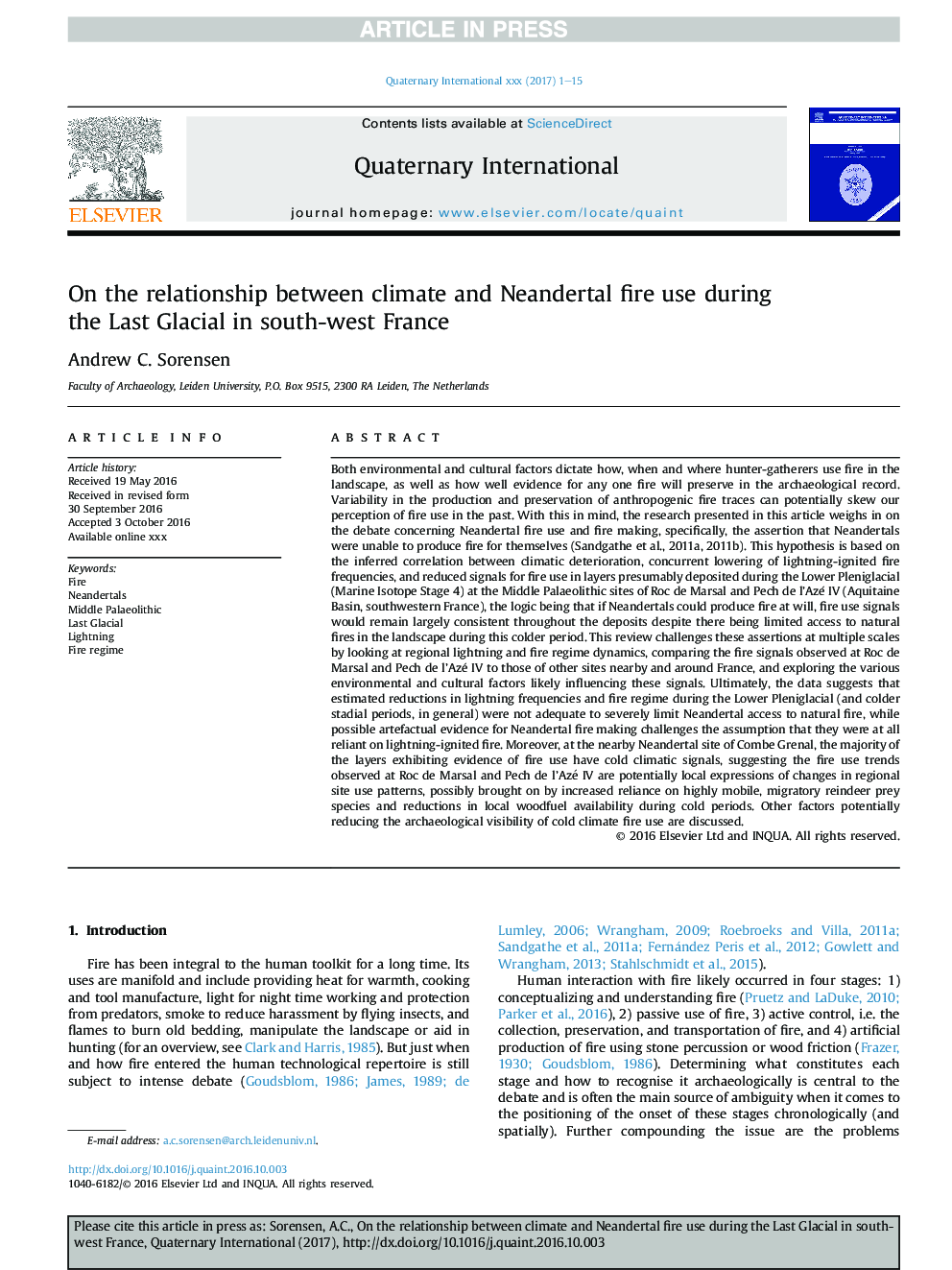| کد مقاله | کد نشریه | سال انتشار | مقاله انگلیسی | نسخه تمام متن |
|---|---|---|---|---|
| 5113546 | 1377938 | 2017 | 15 صفحه PDF | دانلود رایگان |
عنوان انگلیسی مقاله ISI
On the relationship between climate and Neandertal fire use during the Last Glacial in south-west France
دانلود مقاله + سفارش ترجمه
دانلود مقاله ISI انگلیسی
رایگان برای ایرانیان
کلمات کلیدی
موضوعات مرتبط
مهندسی و علوم پایه
علوم زمین و سیارات
زمین شناسی
پیش نمایش صفحه اول مقاله

چکیده انگلیسی
Both environmental and cultural factors dictate how, when and where hunter-gatherers use fire in the landscape, as well as how well evidence for any one fire will preserve in the archaeological record. Variability in the production and preservation of anthropogenic fire traces can potentially skew our perception of fire use in the past. With this in mind, the research presented in this article weighs in on the debate concerning Neandertal fire use and fire making, specifically, the assertion that Neandertals were unable to produce fire for themselves (Sandgathe et al., 2011a, 2011b). This hypothesis is based on the inferred correlation between climatic deterioration, concurrent lowering of lightning-ignited fire frequencies, and reduced signals for fire use in layers presumably deposited during the Lower Pleniglacial (Marine Isotope Stage 4) at the Middle Palaeolithic sites of Roc de Marsal and Pech de l'Azé IV (Aquitaine Basin, southwestern France), the logic being that if Neandertals could produce fire at will, fire use signals would remain largely consistent throughout the deposits despite there being limited access to natural fires in the landscape during this colder period. This review challenges these assertions at multiple scales by looking at regional lightning and fire regime dynamics, comparing the fire signals observed at Roc de Marsal and Pech de l'Azé IV to those of other sites nearby and around France, and exploring the various environmental and cultural factors likely influencing these signals. Ultimately, the data suggests that estimated reductions in lightning frequencies and fire regime during the Lower Pleniglacial (and colder stadial periods, in general) were not adequate to severely limit Neandertal access to natural fire, while possible artefactual evidence for Neandertal fire making challenges the assumption that they were at all reliant on lightning-ignited fire. Moreover, at the nearby Neandertal site of Combe Grenal, the majority of the layers exhibiting evidence of fire use have cold climatic signals, suggesting the fire use trends observed at Roc de Marsal and Pech de l'Azé IV are potentially local expressions of changes in regional site use patterns, possibly brought on by increased reliance on highly mobile, migratory reindeer prey species and reductions in local woodfuel availability during cold periods. Other factors potentially reducing the archaeological visibility of cold climate fire use are discussed.
ناشر
Database: Elsevier - ScienceDirect (ساینس دایرکت)
Journal: Quaternary International - Volume 436, Part A, 29 April 2017, Pages 114-128
Journal: Quaternary International - Volume 436, Part A, 29 April 2017, Pages 114-128
نویسندگان
Andrew C. Sorensen,